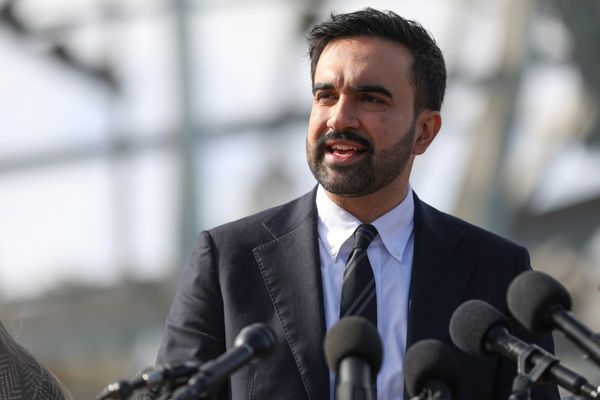

Are you feeling personally affected by Up Bank’s impending switcheroo to a new dual interest rate system? I know I am. I’ve been an Up Bank user — or Upsider, as they’re called — since 2020 and have absolutely loved it. From the $0 travel fees to the joint-account 2Up functionality, I’ve sung Up Bank’s praises so loudly that it’s become a joke within my friend group. But now, if the “Grow and Flow” interest rate does go into effect in September, I feel like it could be time for a change.
In case you missed it, Bendigo’s mobile-only bank has changed the way it structures its interest rate to a variable system. Previously, Up Bank offered a flat 3.85 per cent interest rate on all of its savers accounts, which it encouraged its users to use.
Now, come September, it’s switching to a model which will see users receive a rate of 4.85 per cent if they don’t touch the account. However, if they do make a withdrawal within the month, the rate goes down to 1.85 per cent.

According to the many users (myself included!) who flocked to the app for its easy-to-use interface, high fixed rates and ability to create dozens of savings accounts to support a “bucket” or “envelope” savings system, it’s a bit of a slap.
Especially when the bank encouraged users to create multiple saving accounts (called savers within Up Bank) to encourage healthy financial habits.
Admittedly, Up Bank has never had the highest interest rate for long-term savings accounts on the market, but its appeal, with an estimated one million users was its high, flat rate for accounts that you can dip in and out of as you go. It’s pretty damn convenient.
Since the announcement of the dual interest rates, a bunch of Up Bank users are speaking up on social media and claiming that they’re ready to switch banks if Up Bank doesn’t reverse the decision to use a dual interest rate system.
So, if you’re in the same boat as me and looking for another option, here are a few.
Other banks interest rates, compared
Ubank

Ubank and Up Bank aren’t just similar in name; they’re quite similar in offerings too. Both banks allow for a “bucket” or “envelope” savings system where users can split their savings into multiple accounts.
Ubank currently offers a bonus rate of 5 per cent interest for the first four months, then it drops down to a variable rate of 4.6 per cent from there on out. The bonus rate can be activated by $500 being deposited into any of your Spend, Bills or Save accounts before 11:30pm (AEST) on the last day of each month.
Once the money has been placed in an account and you’ve qualified for the bonus rate, you can freely take money out without affecting the higher interest rate. Plus, you won’t have to pay any fees in Australia or while you’re travelling. Not too shabby!
The downside is that at Ubank you can only have up to 10 savings accounts. For those used to having up to 50 with Up Bank, it’s a bit of a downgrade.
Macquarie Bank

Macquarie Bank offers pretty competitive interest rates without the minimum deposit requirement. Users can access a rate of 4.85 per cent for the first four months, and a 4.5 per cent variable rate after that. Better yet, there are no account fees with a Macquarie account.
Macquarie Bank also offers $0 international transaction fees on purchases in-store and online. However, charges may occur at overseas ATMs or over-the-counter purchases.
ANZ Plus

ANZ Plus is ANZ’s online banking presence. It offers two bank accounts: ANZ Plus Everyday and ANZ Plus Growth Savers, with an optional ANZ Plus Flex Saver.
The ANZ Plus Growth Saver has a standard rate of 0.15 per cent on your balance each month, or a bonus interest rate of 4.5 per cent in total when you top up your Growth Saver balance by $100. Meanwhile, the ANZ Flex Saver gives you 4.5 per cent on your first $5000 and 1.5 per cent on every dollar over $5000.
The downside? The standard rate is pretty low if you don’t hit the bonus threshold, and there are some fees involved. ANZ incurs an overseas transaction fee of 3 per cent of the transaction value, a $5 international ATM withdrawal fee and inward international money transfers can incur a fee of up to $15.
Compared to Up Bank’s $0 ATM withdrawal fee and overseas transaction fee, that’s no bueno in my books.
Bank of Queensland (BOQ)

Bank of Queensland tackles the whole everyday savings and future savings in a different way with two separate accounts: the Future Saver and the Simple Saver.
Future Saver accounts allow for a 5.10 per cent interest rate when a minimum of $1000 is deposited into an Everyday Account (which is linked to the app) and five transactions are made each month. This is one of the highest interest rates on the market currently. The only catch is that you have to be 14 to 35 years old to qualify.
Simple Savers allow for a 4.65 per cent interest rate for the first four months, and then 4.3 per cent after that, without any minimum deposit. You can also have up to nine Simple Saver accounts for various saving purposes.
Suncorp

Suncorp Bank has three different savings accounts to choose from.
Suncorp’s Growth Saver account has a standard rate of 0.15 per cent, with a bonus variable interest adding up to 4.55 per cent if you grow your net balance by $200 or more and make no more than one withdrawal. It’s the type of account for long-term savings, rather than the day-to-day stuff you’d use your many Up Bank savers for.
The next one is a flexiRates account, which aims to “reduce the temptation to spend” chunks of money that you’re saving for something in particular. With a flexiRate account, you receive a different interest amount depending on how long you intend to save the cashola for. For example, if you’re putting the money aside for one month, you’ll cop $1.05 per cent per annum. Whereas if you’re saving for 12 months, you’ll get 3 per cent.
Then, there’s the Term Deposit account. This is a traditional savings account which well and truly locks your money away for later. If you put your money in one of these accounts, you won’t be able to access your funds for 31 days.
The good news? There are no fees. The bad news? With more features towards long-term savings rather than everyday management, and the ability to only open nine accounts, it doesn’t feel like a great replacement for those who love Up Bank’s functionality.
Rabobank

Little-known Rabobank is an Australian bank which deposits its funds into supporting Aussie farmers, food and agribusinesses. On the website, Rabobank highlights that it supports the Andreazza family, who produce the soft wheat that makes TimTams. The more you know.
Anyway, Rabobank currently has an introductory offer of 5.15 per cent bonus interest for the first four months. After that, the standard variable rate drops down to 3.7 per cent.
Obviously, I’m not telling you which bank to go with. There are clearly pros and cons for every option above, and Up Bank. However, if you feel like your money is better suited sitting in another bank’s pocket, power to you.
The post Personally Victimised By Up Bank’s Changes? Here Are 6 Other Options To Consider appeared first on PEDESTRIAN.TV .







